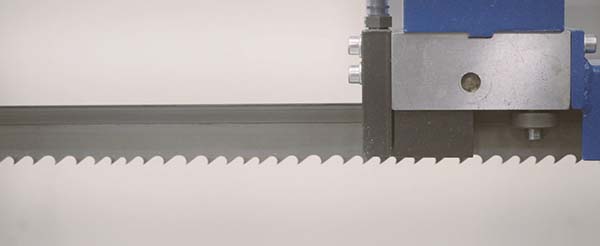
When it comes to bandsawing, it is not just the design of the blade or the workpiece material that is important; it is also necessary to have the correct blade in the first place. With this thought in mind, Saws UK has published a guide to blade terminology and material blade types.
To get the most economic cut possible when bandsawing it is necessary to choose a blade with the correct number of teeth per inch (TPI). This number will vary depending on the workpiece material. TPI also depends on whether the shop is cutting individual pieces of material or bundled amounts. As a point of note: the positioning of material in a vice can also alter the blade’s TPI, as can material size and shape.
There have been a number of new techniques introduced to the bandsawing sector within recent years. So, to ensure sufficient knowledge to take advantage, the following is Saw UK’s list of blade technology: tooth face – the surface of the tooth; tooth pitch – distance between the tip of one tooth and that of the next one; gullet – curved area at the bottom of the tooth; TPI – teeth per inch (measurement between the gullets); tooth rake angle – angle of the tooth face perpendicular to the direction in which the saw is cutting.
Further terminology includes: blade width – measurement between the end of a tooth and the back of the band; blade thickness – how much the saw measures between either side of the blade; and blade set – clearance from the back of the blade through the cut.
For further information
www.sawsuk.com















